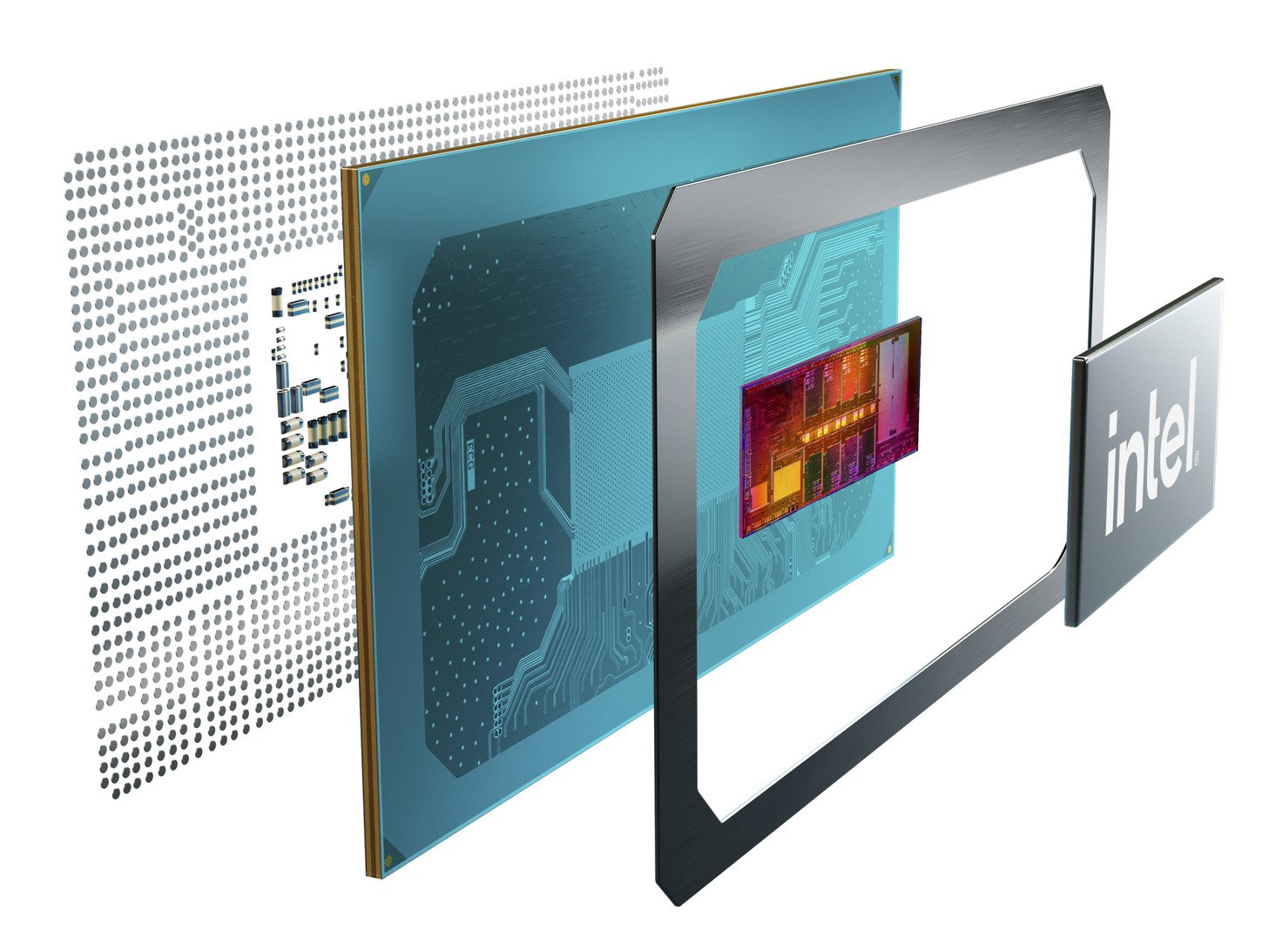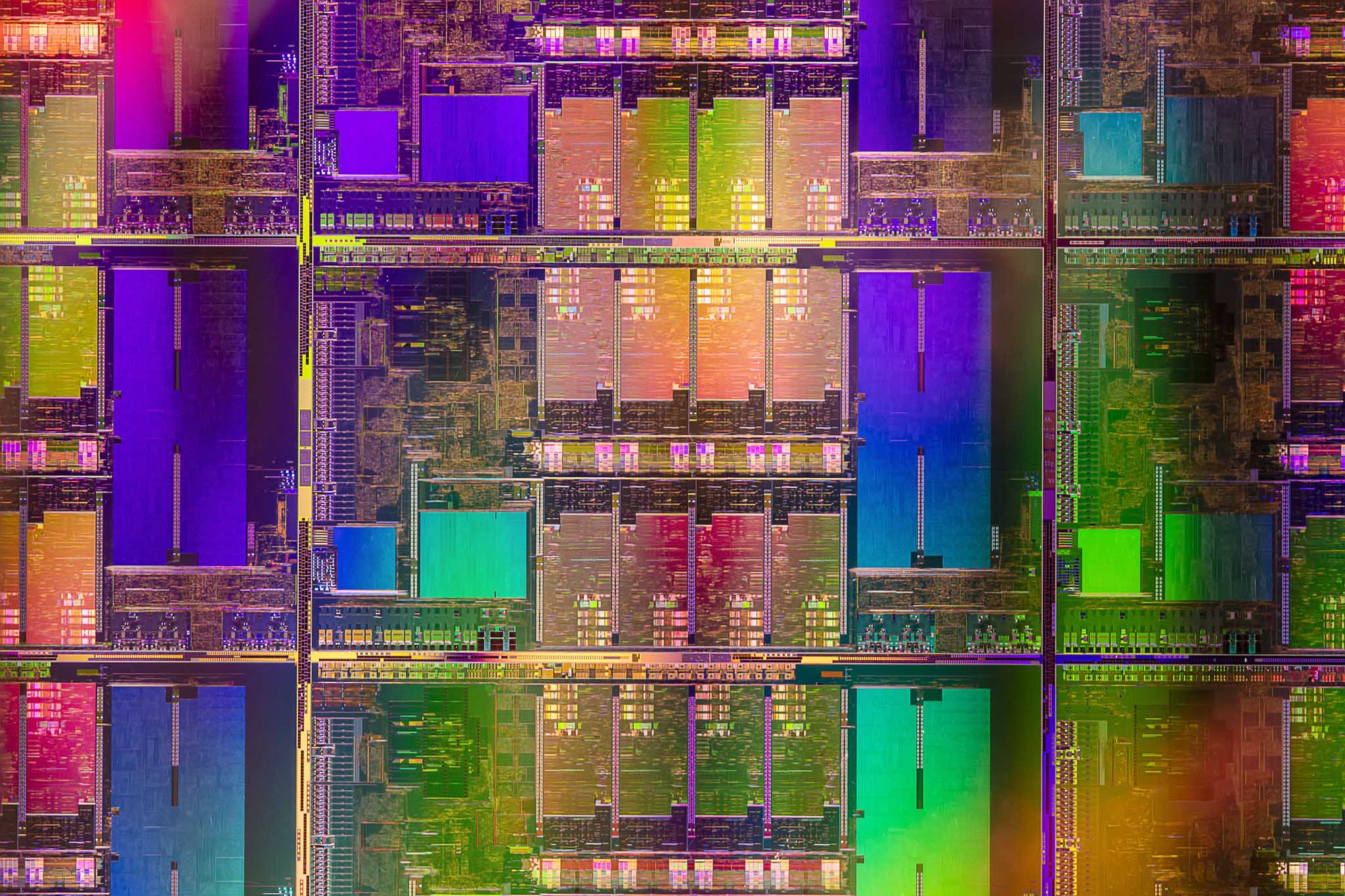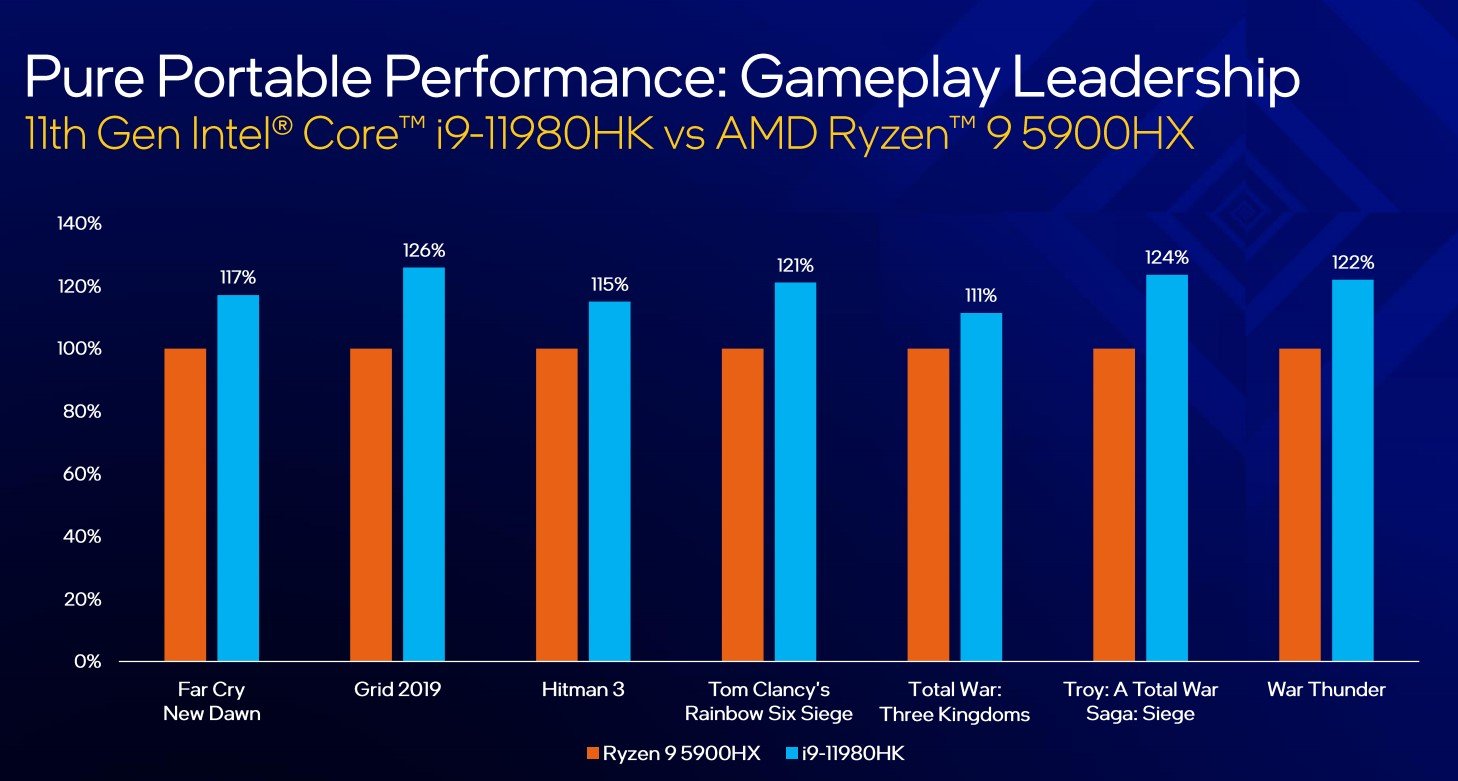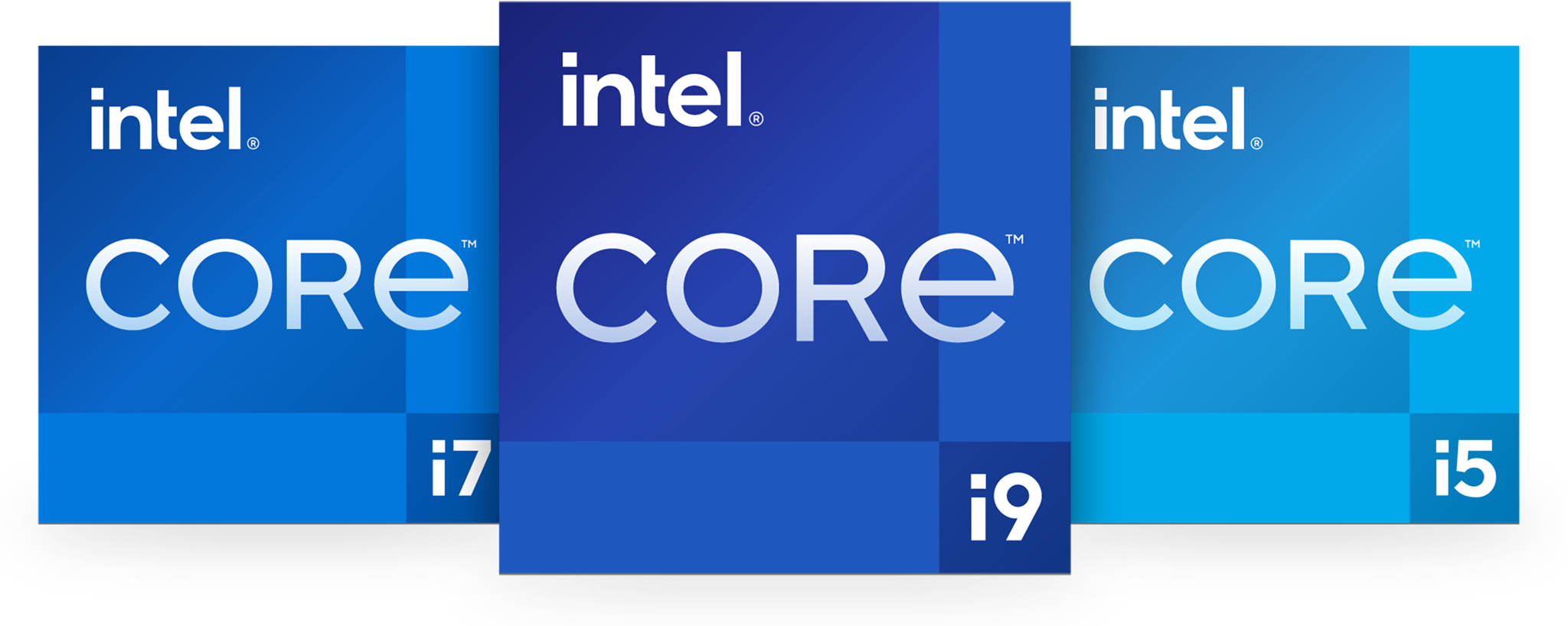Intel announces 11th Gen H-series 'Willow Cove' mobile processors with 19% gen-over-gen improvement
The latest 10nm SuperFin 'Willow Cove' H-series chips from Intel will power millions of powerful gaming and workstation laptops. Here's what's new.

What you need to know
- Intel has announced its 11th Gen H-series processors for gaming laptops and workstations.
- The chips are based on Willow Cove core microarchitecture on 10nm SuperFin.
- Over 1 million chips have already shipped, and over 80 laptop designs will feature them in the coming months.
Like the sun rising in the east, Intel has revealed its highly expected, but still impressive, 11th Gen H-series of mobile processors (and Xeon too). These beefier processors bring desktop-like performance to enthusiast-level laptops for gaming and powerful workstations for engineers and data scientists.
Boasting the world's fastest single-threaded processor, these Intel chips feature 6 to 8 cores for competitive performance against AMD (who still wins on core count). Based on 'Willow Cove' core microarchitecture on 10nm SuperFin, these chips deliver a quoted "19% … multithreaded performance improvement" compared to Intel 10th Gen H-series.

What's new: Intel 11th Gen H-series processors
- Willow Cove core microarchitecture on 10nm SuperFin
- Up to 5.0Ghz turbo
- Overclocking on some SKUs
- 20 PCIe Gen 4 w/RST bootable RAID0
- Up to 44 platform PCIe Lanes
- Xe Graphics Architecture (32EU) Intel UHD Graphics
- Thunderbolt 4 (40Gbps bandwidth)
- Discrete Intel Killer Wi-Fi 6E (Gig+)
- Optane H20
- IPU6SE Integrated for high fidelity MIPI support
- Dual eDP integrated for power-optimized Companion Display
Interestingly, while the 10th Gen H-series could peak at 5.3GHz, the new 11th Gen only goes to 5.0GHz. Intel claims that while 5.3GHz was achievable, the new 'Willow Cove' design lets them hit sustained 5.0GHz longer than last gen, giving more real-world benefit than previous year's headline-grabbing metric.
The new 11th Gen series is already achieving mass adoption, too. Intel claims it has shipped over one million new chips to its OEM partners, including Acer, Lenovo, Alienware Dell, MSI, Gigabyte, ROG, HP, and Razer. Altogether, Intel expects over 80 laptop designs to feature its most powerful mobile chips.
The SKUs for the chips are similar to last year's 10th Gen, but there are some notable advancements. For instance, a few higher-end SKUs are overclockable – a feature common in desktop chips but rare in laptops. The feature allows per-core voltage control, XTU enhancements, and an internal BCLK option. The feature is controlled via the new Intel Speed Optimizer, and it also increases multithreaded performance by increasing all core frequencies.
11th Gen Intel Core Consumer Mobile CPUs
| Category | i5-11260H | i5-11400H | i7-11800H | i9-11900H | i9-11980HK |
|---|---|---|---|---|---|
| Cores | 6 | 6 | 8 | 8 | 8 |
| Threads | 12 | 12 | 16 | 16 | 16 |
| L3 Cache | 12M | 12M | 24M | 24M | 24M |
| cTDP Frequency (GHz) | 2.1@32W | 2.2@35W | 1.9@35W | 2.1@35W | 3.3@65W |
| Graphics | Intel UHD | Intel UHD | Intel UHD | Intel UHD | Intel UHD |
| GPU Base Clock | 350MHz | 350MHz | 350MHz | 350MHz | 350MHz |
| GPU Max Clock | 1,400MHz | 1,450MHz | 1,450MHz | 1,450MHz | 1,450MHz |
| One-Core Turbo | 4.4GHz | 4.5GHz | 4.6GHz | 4.9GHz | 5.0GHz |
| Two-Core Turbo | 4.4GHz | 4.5GHz | 4.6GHz | 4.9GHz | 5.0GHz |
| Four-Core Turbo | 4.2GHz | 4.3GHz | 4.5GHz | 4.8GHz | 4.9GHz |
| Six-Core Turbo | 4.0GHz | 4.1GHz | 4.4GHz | 4.6GHz | 4.7GHz |
| Eight-Core Turbo | NA | NA | 4.2GHz | 4.4GHz | 4.5GHz |
| vPro | No | No | No | No | No |
| SIPP | No | No | No | No | No |
| TXT | No | No | No | No | No |
11th Gen Intel Core Commercial Mobile CPUs
| Category | i5-11500H | i7-11850H | W-11855M | i9-11950H | W-11955M |
|---|---|---|---|---|---|
| Cores | 6 | 8 | 6 | 8 | 8 |
| Threads | 12 | 16 | 12 | 16 | 16 |
| L3 Cache | 12M | 24M | 18M | 24M | 24M |
| cTDP Frequency (GHz) | 2.4@35W | 2.1@35W | 2.6@35W | 2.1@35W | 2.1@35W |
| Graphics | Intel UHD | Intel UHD | Intel UHD | Intel UHD | Intel UHD |
| Base Clock | 2.9GHz | 2.5GHz | 3.2GHz | 2.6GHz | 2.6GHz |
| One-Core Turbo | 4.6GHz | 4.8GHz | 4.9GHz | 5.0GHz | 5.0GHz |
| Two-Core Turbo | 4.6GHz | 4.8GHz | 4.9GHz | 5.0GHz | 5.0GHz |
| Four-Core Turbo | 4.4GHz | 4.8GHz | 4.7GHz | 4.9GHz | 4.9GHz |
| Six-Core Turbo | 4.2GHz | 4.6GHz | 4.4GHz | 4.7GHz | 4.7GHz |
| Eight-Core Turbo | NA | 4.3GHz | NA | 4.5GHz | 4.5GHz |
| vPro | Yes | Yes | Yes | Yes | Yes |
| SIPP | Yes | Yes | Yes | Yes | Yes |
| TXT | Yes | Yes | Yes | Yes | Yes |
Intel appears to be not too worried over benchmarks, either. In its press briefing, the chipmaker gladly put the new Core i9-11980HK up against the AMD Ryzen 9 5900HX with Intel besting big red across Far Cry New Dawn, Grid2019, Tom Clancy's Rainbow Six Siege, and more.

But it is not all about the top-tier H-series chips, as Intel claims the new (and more affordable) Core i5-11400H can edge out AMD's Ryzen 9 5900HS. If the results hold up in independent tests, it will demonstrate that Intel is doing OK against AMD, even if it's still behind in chip fab technology.
Get the Windows Central Newsletter
All the latest news, reviews, and guides for Windows and Xbox diehards.
Another odd caveat with the 11th Gen H-series is these do not use Intel Iris Xe graphics per se. Instead, Intel says the Intel UHD Graphics with 32 execution units (EUs) is based on "Xe Graphics Architecture," whatever that means. Of course, most laptops with an H-series chip also feature a beefy NVIDIA GeForce graphics card (including the new RTX 3050 Ti) making the fallback and lower-powered UHD Graphics OK for basic tasks.

The rest of the 11th Gen features include Killer Wi-Fi 6E (Intel bought the company last May), Thunderbolt 4, additional PCIe lanes, support for PCIe 4.0, and integrated dual Embedded Display Port (eDP) for companion displays. While those technologies are expected, they are also welcomed. For those looking for Intel Evo certification, the company explains those criteria are reserved only for its 11th Gen U-series processors found in Ultrabooks.
As to when you can get your hands on a new laptop with Intel's latest, some companies are shipping in late May, while others are close to the June and July timeframe, meaning not too long from now.

Daniel Rubino is the Editor-in-chief of Windows Central. He is also the head reviewer, podcast co-host, and analyst. He has been covering Microsoft since 2007 when this site was called WMExperts (and later Windows Phone Central). His interests include Windows, laptops, next-gen computing, and wearable tech. He has reviewed laptops for over 10 years and is particularly fond of 2-in-1 convertibles, Arm64 processors, new form factors, and thin-and-light PCs. Before all this tech stuff, he worked on a Ph.D. in linguistics, performed polysomnographs in NYC, and was a motion-picture operator for 17 years.
